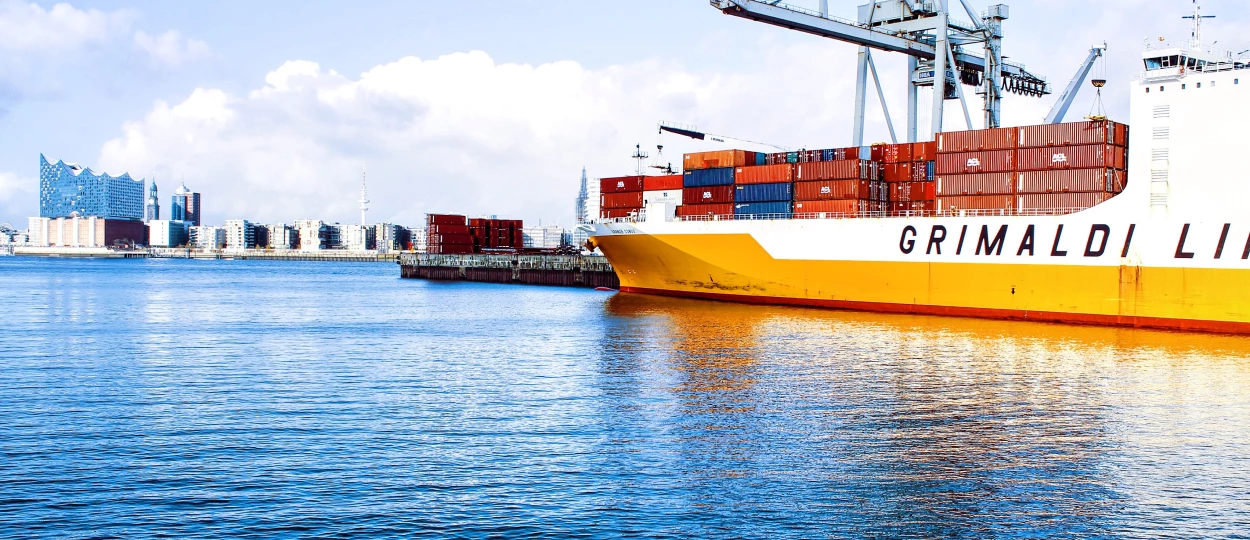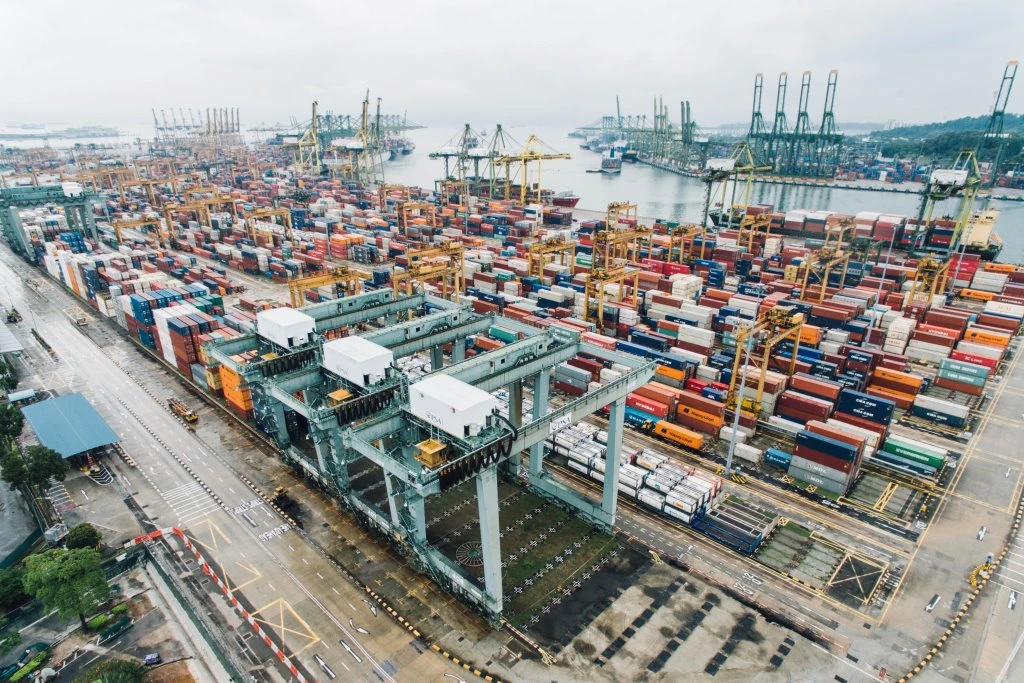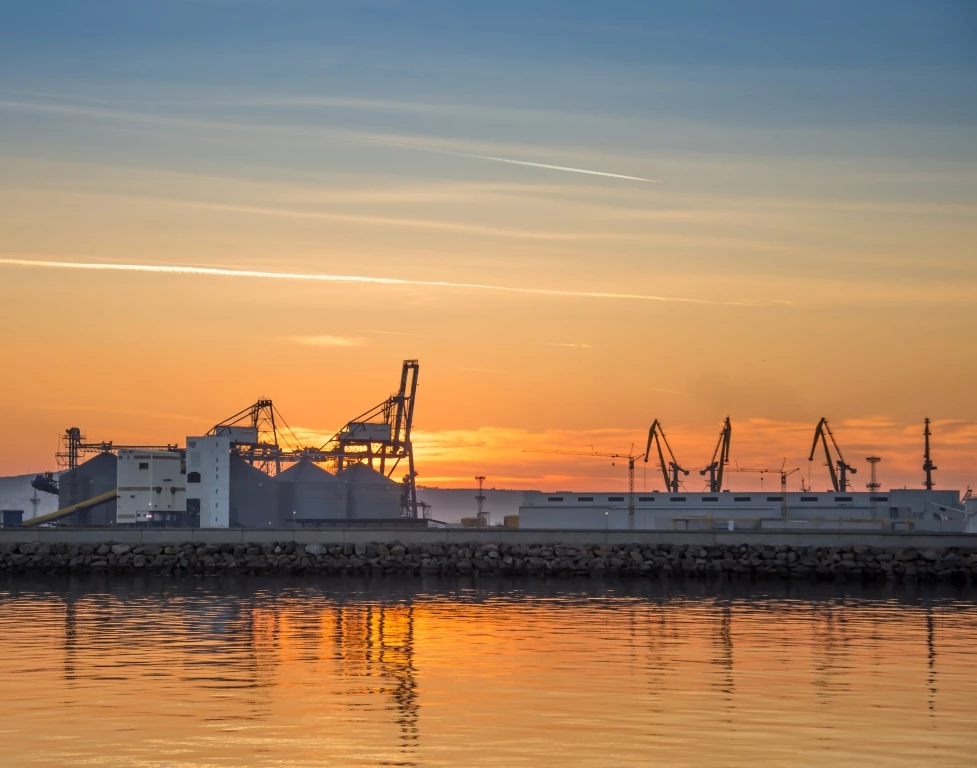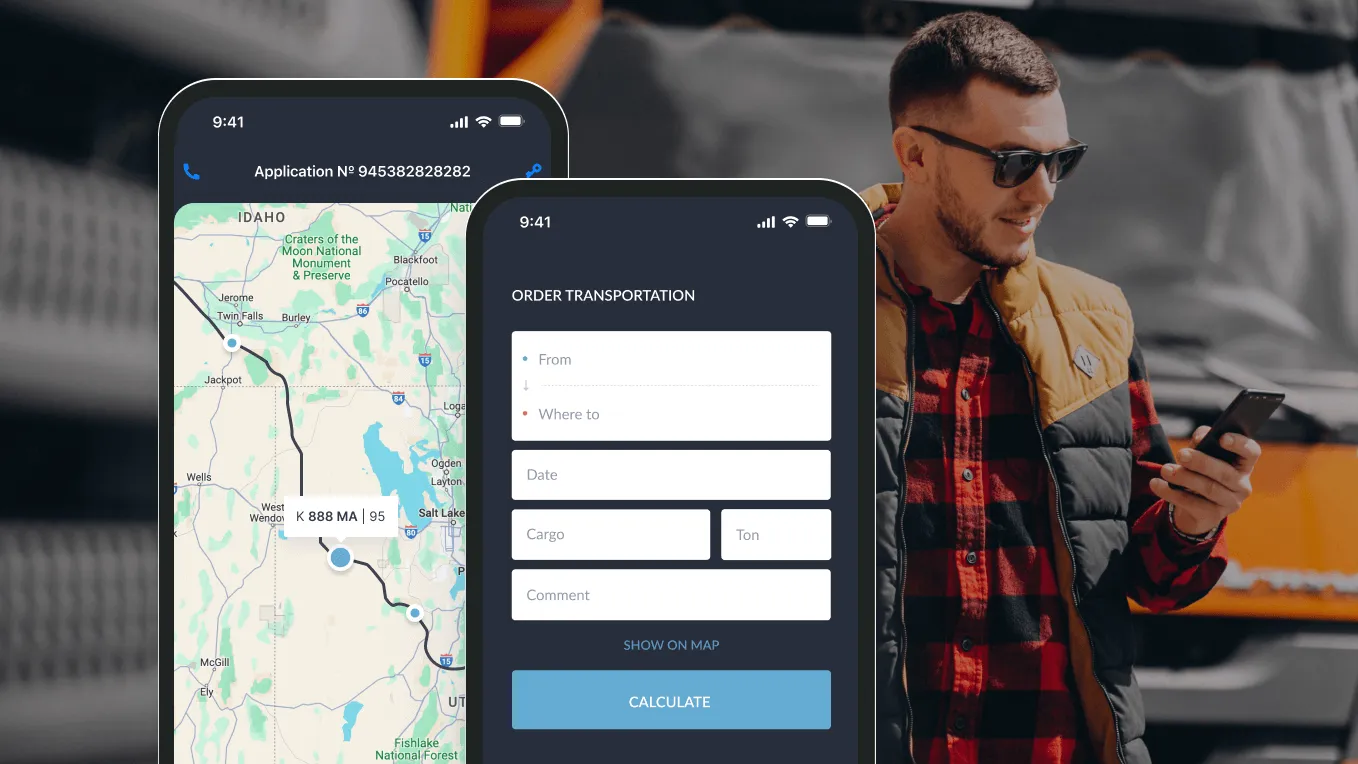
Global TMS market size is expected to reach $4.8 billion by the end of 2025 with an overwhelming annual CAGR of 14.5%. Through data analysis and transportation optimization, TMS allows you to save the budget in the shipping process.
With over 15 years of experience and extensive expertise as a transportation software development company, we have researched the benefits of developing a custom solution over an off-the-shelf. We are experts in TMS software development and logistics app creation and invite you to cooperate with us in business!
According to Cerasis, invoice payments can be reduced by 90-95% with a custom transportation management system. What’s the catch? Let’s check out the benefits a TMS offers.
Benefits of the TMS Software
Saving Costs
ARC Advisory Group research shows that TMS application brings companies up to 8% of savings. It can be attributed to overall supply chain optimization through artificial intelligence usage, automated decision making, load consolidation, route optimization, time-saving, reduction in carrier overcharges, and audit.
Transparency
Developing transportation management software increases transparency, which is the biggest customer demand today. Locating all of your transportation data in one place makes it possible to schedule and track shipment in real time quickly and easily, and with the lowest cost in mind.
Improved Warehouse Management
Your warehouse management upgrades due to load storage and shipping operations planned by the system. The TMS incorporates advanced route planning algorithms to optimize delivery schedules and minimize transportation costs.
Accurate Data
Another advantage you get with a Transport Management System is streamlined data accuracy due to the decrease in manual entry and improved visibility.
Optimized Finances
Financial enhancements are manifested through analysis, reporting, and auditing, which are available, and consolidation services, which can be integrated. As soon as you entrust billing and payments to the system, inaccurate charges decrease to a minimum, and duplicate payments are quickly caught. It all makes your financial monitoring simple and clear. The demand is coupled with supply: more and more logistics management solutions are being released. How to choose a good one and whether it's better to make use of existing options or take up a custom TMS software development — these are the issues we will discuss next.
Want a web app that does more?
Let's build a solution that's smart, sleek, and powerful.
Alina
Client Manager

What Makes a Good Transportation Management System
The cost of transportation management system development may be variable. Obviously, it depends on the set of functions it possesses and the easiness of operation.
An efficient TMS makes your job easier whether you are a shipper, a carrier or a 3PL. Though, only when it meets the demands of you business. Each system has its own features and differs from the others. Some of them are only aimed at the specific sector of economics. So, the first and the most important indicator of a good TMS is that it fits your business like a glove.
Good transport management systems are multifunctional and allow diverse data processing. As we have already mentioned, the cost of transportation logistics software is determined by its features.

Key Features of a Transportation Management System
A transportation management system typically includes features such as real-time tracking, route optimization, load planning, and carrier management to help streamline logistics operations. It also offers tools for compliance, cargo auditing, document management and analytics, increasing efficiency and transparency while reducing costs.
Contract management
Implementation of this feature presupposes easy contracts viewing, costs comparison, as well as terms and agreements tracking. An administrator can track contracts in real time and receive alerts when some of the agreements require renewal.
While a brand-new contract may require weeks to reach an agreement between the parties and execution thereafter, a contract management feature accelerates the process through standard legal document types, clause libraries, and template automation. Additionally, the process of amendments to the existing contracts can also be simplified and sped up due to the amendment wizard integrated along with the document upload feature, and specific amendment workflows.
Freight settlement
Transportation software developers progressively tend to implement the multifaceted features of auditing, freight invoices payments, and new payment voucher creation all in one place. What is more, the present digital space allows receiving, storing, and updating carriers’ shipping rates in real-time and from multiple sources online, it simplifies the up-to-the-moment comparison possibilities and makes decision-making much easier than it was before. When your TMS comprises thousands of carriers, it’s crucial to be able to negotiate and communicate online. Some other processes are also related to management and can be implemented here, the option to organize a tender, for instance, for some specific cargo, or manage orders right away.
Reporting and analytics
The business that is continually working on efficiency enhancement saves countless hours in the long run. That’s why it’s vital to integrate the functionality of reporting and analysis right into the TMS you develop. When you have optimized historical shipment data, distribution patterns, industry trends reviews, and market prices at hand you can get valuable insights on the up-to-date situation in the industry, spot the bottlenecks in your business processes and eliminate them in a due time.
Along with classic reporting tools like charts and dashboards, specialized maps to visualize shipping patterns can be considered for better strategy creation and detailed plan development.
Business performance monitoring and financial reporting
One of the benefits of transportation management systems to mention here would be an integrated Business Intelligence infrastructure. It may allow you to monitor your business performance in real time through the performance metrics reviews, data running, extraction, and transformation into real-time reporting spreadsheets. You can, for instance, get the costs analysis, where expenses are filtered by transport mode, or check what clients bring you the largest volume, also monitor the margin data, etc.
Regular custom reports that can be generated for whatever needs will allow you to repeatedly review the KPIs (key performance indicators), like volume trends, cost per mile/ton, number of deliveries, canceled and delayed orders, and make the necessary improvements to your business any time.
Risk management
The advantages of a transportation management system are not restricted by order or workflow management, risk management is what really matters for business stability and consistency. Through the automated process of auditing and automatic alerts set, you can effectively minimize the potential risks. So do not neglect this feature during the transportation management software development for your niche.
Visibility of the transportation process
A good TMS allows shipments tracking all the way long from pickup to delivery, it’s reasonable to adjust status change notifications and real-time exchange of shipment information between the carrier, distributor, and client. Such a detailed view of every step of the transportation process and accuracy of tracking and monitoring facilitate effective management and reporting. What is more, by being aware of the critical up-to-date details you can keep a healthy demand and supply balance through proactive management and decrease the overall costs.
Connectivity and integration possibilities
Other important issues include connectivity and the potential for further development and adaptation.
TMS heavily depends on data exchange between different partners (suppliers, carriers and logistics service providers), so it must be accessible for integration with external systems. And it should be possible to update the system without excess costs in case of turnover and system loading increase, supply chain advances or other alterations.

Transportation Management System: Build VS Buy
Hundreds of vendors provide TMS solutions nowadays. There are a lot of ready-made products with which you are only proposed to pay for implementation and subscription. So, is there really a need for transport management system development?
To answer this question, define your operational needs and what you want to achieve through TMS implementation. Consider your long-term goals and the possibility to differentiate and expand. Each business is unique and has its own requirements, culture, and internal processes.
You should also take into account hidden TMS costs. They may be related to the license, implementation, subscription extension, annual maintenance, the necessity for 3rd party software purchase and implementation, and the personnel training.
Finally, data security is a great demand. The loss induced by poorly protected data storage can be fatal. Here, of course, in-house solutions are of a big advantage.
You may also read 5 Progressive Digital Solutions to Upscale Your Transport and Logistics Business
Our team has carried out more than 346 projects. Many of them were in the sphere of logistics and transportation. It allows us to distinguish two major ways of interaction with logistic companies.
The first variant is a transportation management system development from scratch. Such cooperation begins with a discovery phase. First, we find out the needs, pains, and requirements of our client, then proceed to product design, and only after everything is approved, the team starts development.
However, the market of transportation and logistics services has passed the first stage of digitization already. That’s why more and more often we face the necessity to optimize the solutions, which already exist. The tasks may be variable, from UI/UX enhancements to feature expansion and scaling.
Under such a scenario we start with the technical audit of the existing code to decide whether it’s reasonable to improve the solution which exists or to create a new one. At times, the latter is even cheaper. After the decision has been made, we start a new research to translate our client’s requirements into a more technical language, to create user stories. It allows us to make more accurate time estimations and agree it with our customer.
As soon as all the details are negotiated, we proceed to design. Later we start development based on it.
So, the main stages of on demand transportation management system development are:
- Discovery/Research,
- Design,
- Development.

Read more about The advantages of individualized TMS solutions.
There is also a set of technical functions that makes the TMS helpful and efficient. Let’s have a look at the ones most essential.
TMS Technical Functions and Their Influence on Cost
A TMS can take different forms. It can be a standalone product or a component of a broader suite. Depending on your objectives, you may need a unique set of technical functions. It is determined by your company’s business specifics and needs.
That is why for Stfalcon, as a transportation software development agency, it’s vital to investigate the client’s business as well as to find out the goals they want to achieve through TMS manufacturing.
The cost of the transportation management system depends on the technology used and the features it should have. Besides, integrations with 3rd party services may significantly boost the development budget.
But, Let’s get to the point. — Which features are obligatory for most TMSs development process?
- Optimization engines, the feature that allows the creation of the most optimized routes, loads, and combinations to maximize vehicle's capacity and efficiency, as well as choosing the best shipping options from carrier and cost points of view.
- Simple UI/UX. The product you develop should be simple to use and operate. Intended for business owners, managers, drivers, and clients, it should be plain and clear to everyone with understandable screens, personal accounts, and dashboards.
- Customization possibility. Creating your own digital product, you get the ultimate control over the project's functionality, so your custom TMS should meet your workload demands.
- Smooth integration with your working environment. Take care that your product integrates with your invoicing software, payment services, current CRM, GPS, etc. Through integration with modern ERP, WMS/OMS, and geo-information services you can attain near real-time visibility of products and vehicles.
Our Experience
As we already mentioned, the Stfalcon development team has enough expertise and experience in the sphere of transportation and logistics software engineering. Let’s today look into the Uber like solution for the grain truck market.
The major aim of the service is to unite cargo owners and freight operators into one system for the transportation of grains. Stfalcon was asked to make a trucking logistics software to facilitate their mutually beneficial transactions.
The solution allows owners to find carriers easily and with a minimum of bureaucratic procedures. On the other hand, operators can cooperate to transport cargo of any volume at any distance. There also was a task to provide transportation management application development for continuous communication with drivers over the whole itinerary.
The following architecture of the system was designed:
- API, through which all transactions are provided,
- client web-interface (frontend part) for the two categories of users: owners and operators,
- web interface for system administrators (backend part),
- geo-information service which tracks vehicles сo-ordinates,
- mobile app for drivers,
- Uber-like mobile app for cargo owners and freight operators.
Read more about How to Build a Taxi Booking App like Uber or Lyft.
We also ensured integration with such external functions as sending notifications, 1C accounting, bank services, and Google maps API.
The project is now successfully operating in the market. It’s to a great extent due to the fact that we paid much attention to the service business logic.
In the process of project development, our customer changed requirements and business logic several times. He found more efficient business models to meet market demands.
One of the changes was, for instance, breaking down of the request by a carrier. Elevators have the limit of tons they can load per day and cargo volume in the order at times largely exceeded this limit, so such term as "lot” was added. The request is broken down into “lots” of equal or different sizes. One lot is actually one day and a number of tons allowed to be loaded to the elevator. Then carriers operate parts of the lot: if a “lot” is less than 300 tons carrier can take, for example, only 20-25 tons depending on carrying capacity of a vehicle. Due to the iterative development of the functions, we managed with an adaptation of changes mentioned. Both the cargo owner and carrier can follow the process of transportation online.
We also work with third-party services. For transportation management system development, we first considered integrating Wialon to meet all the project needs. Since we aimed to make the service more independent of external factors, we realized all the necessary features on our own.
As you can see, all functions are tailored to the business objectives of the service. Depending on your special needs, the set may be different — and it defines the cost of the TMS software development.
Cost to Build TMS Software
The cost of transportation management system software is calculated based on project length and complexity.
Discovery phase
This stage of development is the shortest, generally taking up to 4 weeks. Yet it’s one of the most important phases throughout the entire project. Since the major estimations of the overall project scope, core system functionality as well as the additional features and integrations take place here, meaning the TMS software price development is also defined at this stage. Stfalcon experts ground on the information and requirements from the client and also present their vision and offer reasonable solutions to the client’s tasks based on previous experience.
After discussing the idea and deciding on the features a project manager calculates the working hours the project will take.
User interface and user experience design
This stage follows the discovery phase and includes design of the constituent parts of the system, generally a website and mobile apps for drivers, clients and the admin panel for overall system management. Similar to discovery, this stage often lasts up to 2 weeks until the design is fully agreed with the customer.
The clients often come to us for help with UI, since an essential feature of TSM is data visualization and interpretation. It’s important to keep this in mind from the very beginning, and it’s no use to cut corners on design solutions.
Front-end and back-end development
In fact, these are 2 stages of programming the client side of the product developed and the server side. While the first is related to everything taking place in the browser, and is seen by the user, the second deals with everything happening behind the curtain — on the server and database.
Front- and backend development are like 2 sides of the coin, they provide smooth and comfortable interaction between the system and the user through intuitive interface at the frontend and sophisticated technologies implemented at the backend.
For the modern TMS, the essential elements are the administration control panel, GIS and driver-dispatcher communication functions, and integrated accounting. Based on this minimal set, the approximate price of the full circle of development is $ 200K, the estimated time is around 6-8 months. It may vary depending on the set of functions important for your business.
Transportation app development
Transportation management system cost of development is also determined by the necessity of a mobile app development, required platform and functionality.
In case you want to supplement your system with mobile apps for clients and drivers (as we did for the Uber-like solution, for example), it will cost $ 90K for the two platforms (iOS and Android) and will take several months additionally.
Quality assessment
This stage presupposes automation and acceptance tests, as well as manual quality assurance if it’s necessary and ordered by the customer.
App launching
Before launching the developed applications Stfalcon makes sure the bugs that have been spot are fixed. However a live interaction of the users with a new product reveals some new bugs to fix and the client should be ready for it. It’s quite natural in the software development world.
Additionally, we assist our clients in apps submission to the Google Play and App Store. Being aware of the specifics of this process, we share our experience with our clients to speed up the developed product time to the market.
Post-launch support
This is the last and optional stage, determined by the customer and termed by the signed contract. If post-support is signed, the Stfalcon’s team continues working on the software improvement, optimization, and maintenance as well as bugs fixing, stability checking, and system monitoring and updating.
FAQs about TMS Software Costs
Is cloud-based TMS cheaper than on-premise TMS?
A cloud-based TMS gives real-time updates and scalability with lower costs. Still, on-premise software offers more control but demands a higher initial investment and ongoing maintenance.
How much does TMS implementation cost?
The estimated cost of developing transportation management is $200-300K, but the amount can vary depending on the features included.
Are there ongoing maintenance costs with TMS software?
Besides the initial license cost, on-premise TMS solutions involve an annual maintenance fee that covers ongoing support, system upgrades, and bug fixes to keep the system functioning up to date.
To Sum Up
TMS is indispensable in modern shipment and logistics. At present, TMS maintenance is getting much cheaper and handier, and more and more companies are implementing it into their supply chain. The development of TMS from scratch allows accurate adjustment of the solution to your business needs.
The approximate TMS development cost is within $ 200-300K, but the sum may vary depending upon the functionality included. Contact us to discuss your business ideas and get a more precise calculation. We can become your trusted TMS vendor.
To choose the priorities for the successful development in the transportation segment, download Stfalcon’s latest whitepaper “Transport Innovations: What Your Business Really Needs”.

 Read the full case study
Read the full case study


